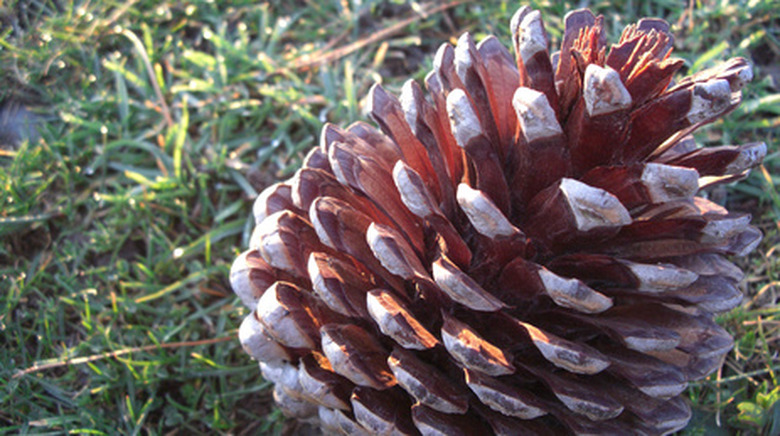How To Plant Douglas Fir Seeds
Things Needed
- Douglas fir seeds
- Bowl of water
- Paper towels
- Plastic baggie
- Refrigerator
- Growing pots
- Potting mix
- Nitrogen-free starter fertilizer
The Douglas fir is a magnificent pine, capable of reaching heights of 200 feet or taller; although most Douglas firs in home settings rarely exceed 60 to 80 feet in height. Douglas fir grow best in colder regions of the country, especially in USDA hardiness zones 4 through 6. The Douglas fir is a fast-growing tree that is pyramidal in shape. Its lumber is used extensively in the building industry, and it's also frequently used for Christmas trees. Provided you can beat the birds, squirrels and other rodents to the nuts, they are relatively easy to grow from seeds.
Step 1
Rub the seeds gently between your thumb and forefinger to remove the papery wing that is attached to the seed. Soak the seeds in a bowl of tepid water for 24 hours. Remove them from the water and lay on paper towels to dry.
- The Douglas fir is a magnificent pine, capable of reaching heights of 200 feet or taller; although most Douglas firs in home settings rarely exceed 60 to 80 feet in height.
Step 2
Put the dry seeds into a baggie and seal it. Place the baggie in the vegetable crisper of your refrigerator in order to stratify the seeds. Keep the seeds in the refrigerator for at least four weeks.
Step 3
Remove the seeds from the refrigerator in late February or early March. Fill growing pots or leach tubes that are at least 6 inches deep with a mixture of potting mix and a starter fertilizer containing no nitrogen. Plant two seeds per container, pressing the seeds into the soil with the pointed tip down. Cover the seeds with 1/4 inch of soil and water gently. Keep soil damp but not soggy.
- Put the dry seeds into a baggie and seal it.
- Plant two seeds per container, pressing the seeds into the soil with the pointed tip down.
Step 4
Keep the pots or leach tubes in a warm, sunny location (at least 70 degrees F during the day) for four to six weeks.
Step 5
Thin the trees to one per container once they reach 3 inches in height. Keep them in dappled shade for the first six weeks, watering well and allowing them to partially dry between waterings.
Step 6
Use a non-nitrogen fertilizer one time during the summer months, and allow the trees to continue growing in their pots until the following spring. Dig a hole larger than the root ball and carefully plant your trees outdoors as soon as the soil can be worked. Press the soil gently around your trees. Trees should be planted in partial sun, where they will also receive shade for a portion of the day.
- Keep the pots or leach tubes in a warm, sunny location (at least 70 degrees F during the day) for four to six weeks.
- Use a non-nitrogen fertilizer one time during the summer months, and allow the trees to continue growing in their pots until the following spring.
Step 7
Water the trees to keep the soil damp but not soggy, allowing the soil to partially dry between waterings. Protect young plants from rabbits, deer and other foragers.
